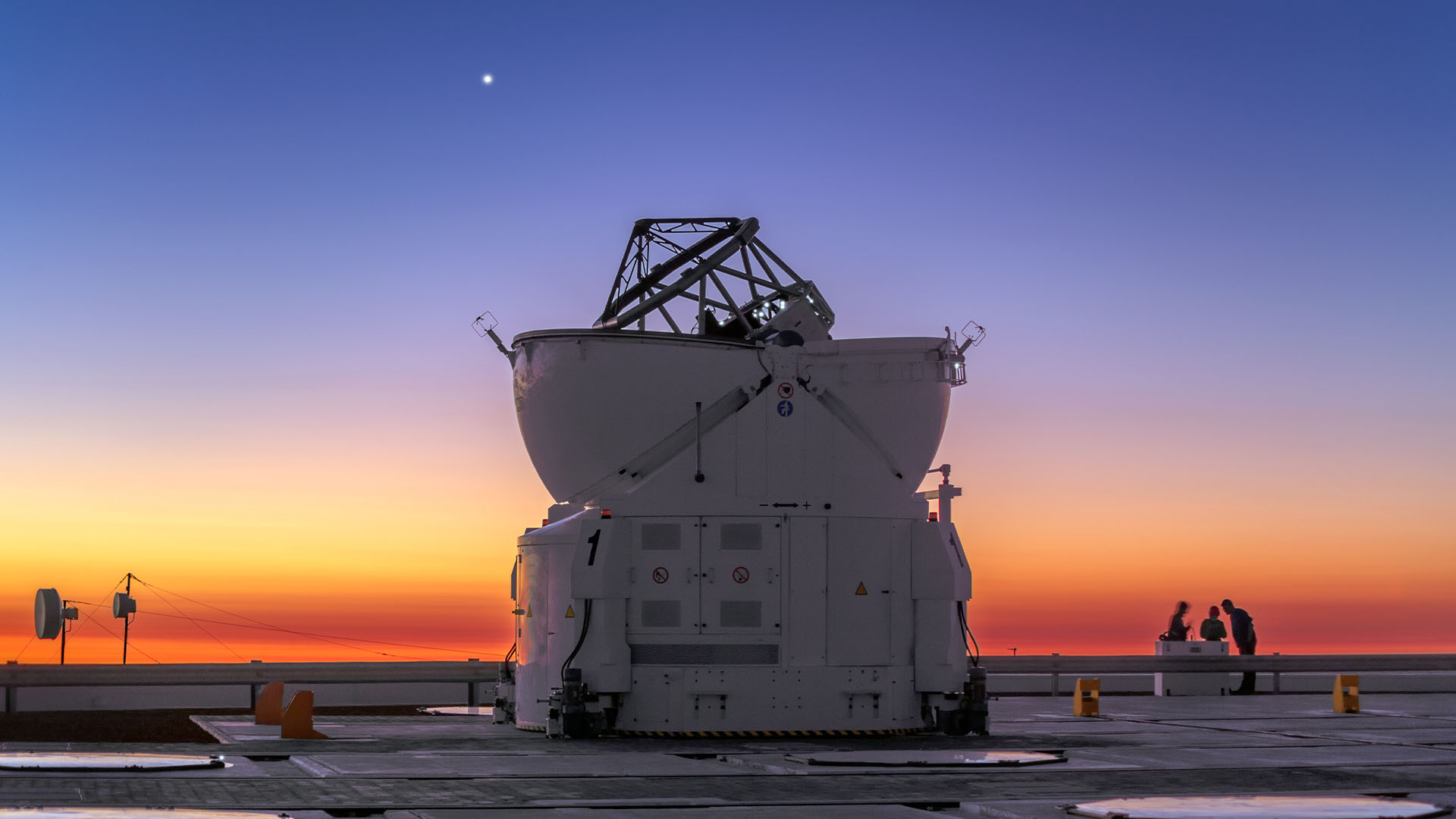Conjunction! How to see Venus and Mars side by side in the sky tonight
On Feb. 22, Venus and Mars will look like a cosmic colon as they appear side by side in the predawn sky.

This Thursday (Feb. 22), Venus and Mars will appear side by side in the predawn sky, and if you rise early, you can spot this planetary dance with the naked eye or a pair of binoculars.
During the seemingly close encounter, called a planetary conjunction, Venus and Mars will come within about half a degree of each other. Venus, one of the brightest objects in Earth's sky, will easily outshine Mars. While Venus will shine at magnitude -3.9, Mars will reach just magnitude 1.3, according to In The Sky. (The brightest objects in the sky have the lowest numbers on this scale, with the sun shining at magnitude -27, according to NASA.)
Because Mars will be harder to see in the light of dawn, the best way to view this conjunction is with a pair of good binoculars. However, you should still be able to see the event with your unaided eyes. Observers in the Northern Hemisphere will be able to see the two planets shine together in the east-southeast from around one hour before sunrise, with Mars about the width of a full moon below Venus, thus forming somewhat of a cosmic colon in the sky.
Related: The 10 best stargazing events of 2024
Although the planets appear close together, they look that way only from our perspective on Earth, of course. On Feb. 22, Venus will be 136 million miles (219 million kilometers) from Earth, and Mars will be 208 million miles (335 million km) from our planet. In other words, the two seemingly side-by-side planets will actually be more than 100 million miles apart from each other.
Conjunctions are fascinating events, but they are not rare in our solar system. There will be three other planetary conjunctions in 2024: Jupiter and Uranus (April 20), Mars and Uranus (July 16), and Mars and Jupiter (Aug. 15).
Get the world’s most fascinating discoveries delivered straight to your inbox.

Jamie Carter is a freelance journalist and regular Live Science contributor based in Cardiff, U.K. He is the author of A Stargazing Program For Beginners and lectures on astronomy and the natural world. Jamie regularly writes for Space.com, TechRadar.com, Forbes Science, BBC Wildlife magazine and Scientific American, and many others. He edits WhenIsTheNextEclipse.com.


